White rhinoceroses, also known as square-lipped rhinos, are the largest living species of rhinoceros. There are two different subspecies of white rhino, the southern white rhinoceros, and the northern white rhinoceros.
Sadly, the northern white rhino is on the brink of extinction. There are just two known members of the subspecies left, and both are female. Read on to learn about the white rhino.
Description of the White Rhino
White rhinos are large mammals, with thick skin, stout bodies, and two horns growing from their snouts. The first horn is longer than the second, and is around 24 in. long on average. Also distinguishing the snout is a square-shaped lip.
This lip is different from other rhino species because these rhinos primarily graze on grass. These creatures are quite large, and males can grow over 14 ft. long. The average male also weighs around 5,000 lbs., but can weigh up to 7,900 lbs. or more.
Interesting Facts About the White Rhino
White rhinos are quite interesting creatures. They have a number of unique traits and adaptations that help them survive, learn more about these adaptations below.
- Rhino “Horn” – While many universally call the pointed growths on rhinos’ snouts “horns,” they are actually somewhat different. True horns have a bony core with a sheath of keratin around it. Rhinos “horns” consist only of keratin, with no bony core.
- Horn Hunt – This fact, however, does not keep poachers from hunting rhinos for their horns. In fact, white rhinos in particular are easier to hunt. They are less aggressive than other rhinoceros species, and have poor eyesight.
- Grazing vs. Browsing – Unlike their black rhinoceros cousins, white rhinos have flattened upper lips. This trait gives the rhinos better grip while grazing for grass. Pointed lips in other species are better for browsing on leaves and branches, but not good for eating grass.
- Social Rhinos – Another way white rhinos differ from other species is in their social habits. Other rhinos are solitary, but female white rhinos live in groups. Groups of rhinos, called “herds,” or “crashes,” can have as many as 14 animals.
Habitat of the White Rhino
This species of rhinoceros lives primarily in savannahs and grasslands. They prefer this habitat to more heavily forested areas because grass grows more densely. Grasses are the white rhino’s favorite food, and they cannot live in habitats without it.
Regardless of habitat preference, white rhinos seek out areas with mud holes. These mud holes help the rhinos cool down and protect their skin from sunburn and insect bites.
Distribution of the White Rhino
These large mammals live only in Africa, primarily southern Africa. The two subspecies were once divided by their ranges, with the northern subspecies in central Africa and the southern subspecies in southern Africa.
Nowadays, the only known northern white rhinos live in zoos. Southern white rhinos live in South Africa, Namibia, Botswana, Zimbabwe, Mozambique, Zambia, Kenya, and Uganda.
Diet of the White Rhino
All rhinoceros are herbivores, which means they eat plants. This species eats grass, and does not typically eat leaves or other plant products. They prefer eating shorter grasses and fresh growth. Because white rhinos are one of the largest grass-eating animals, they have to eat a lot of grass to survive. A single rhino eats up to 120 lbs. of grass per day!
White Rhino and Human Interaction
As a species, the IUCN lists the white rhino as Near Threatened. The primary threat to this species is the continued demand for rhino horns. Poaching is a serious problem to the species, and both poaching and demand for rhino horns are currently increasing.
Unfortunately, the northern white rhinoceros is in a much more dire situation. The last male of the subspecies died in 2018, and the two remaining females are not healthy enough to reproduce.
Domestication
Humans have not domesticated any rhinoceros species in any way.
Does the White Rhino Make a Good Pet
No, white rhinos do not make good pets. It is simply impractical to list all of the reasons why you cannot own a rhino as a pet, as there are quite a few.
White Rhino Care
In zoos, white rhinos live in small herds. They are social animals and, while males are solitary, females live with other females. In zoos, they live in large habitats with plenty of grasses to eat. To supplement their diet of grass, zookeepers feed them pelleted food, hay, and the occasional fruit or vegetable as a treat.
Because their wild counterparts face increasing danger from poaching, keeping a healthy zoo population is incredibly important. Zoos being able to successfully breed these large mammals could mean the difference between extinction and survival.
Behavior of the White Rhino
These large mammals are diurnal, and most active during the day. Their social structure depends on age and sex. Female rhinos live in herds with their offspring, and young males will form their own herds as well.
Once they reach adulthood, the males strike off on their own and remain solitary. Adult males, called “bulls,” establish territories that they defend from other males. They mark these territories with urine and piles of dung.
Reproduction of the White Rhino
Females begin to breed when they are around 6 years old, and males around 10 – 12 years old. While breeding, the pair may remain together for several weeks. The gestation period is 16 months long, and females give birth to a single large calf.
At birth, the calf weighs up to 143 lbs. or so. The calves begin to eat solid food and wean off their mother’s milk at 2 months old, but will continue to suckle from their mothers for up to a year. Calves remain with their mothers until they have their next calf, which is usually 2 – 3 years.

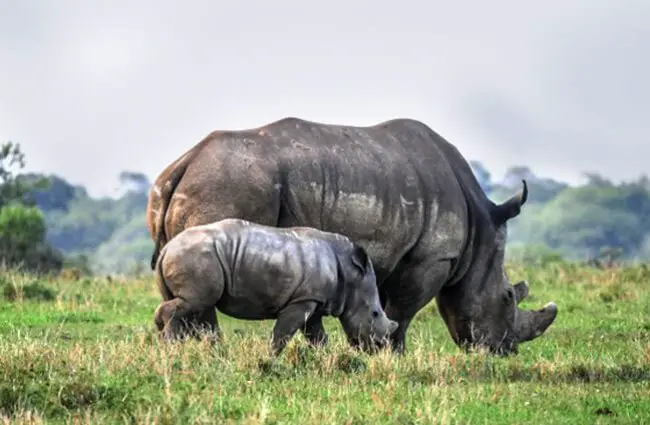
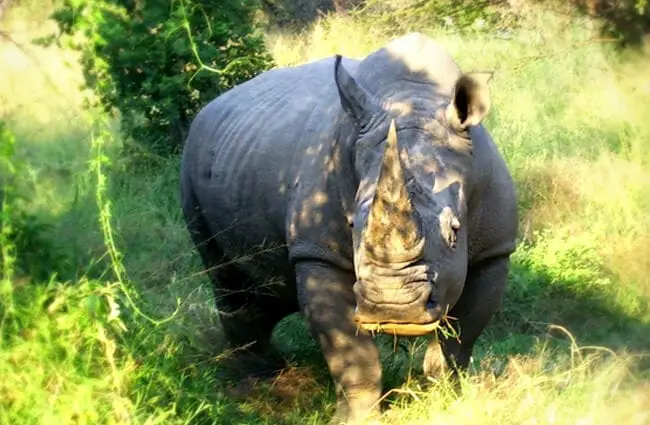
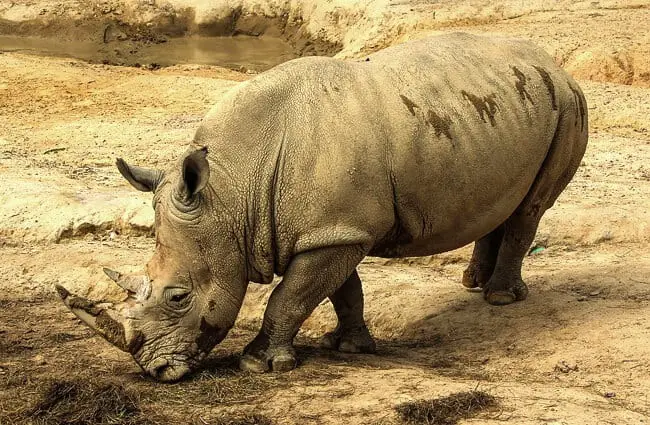
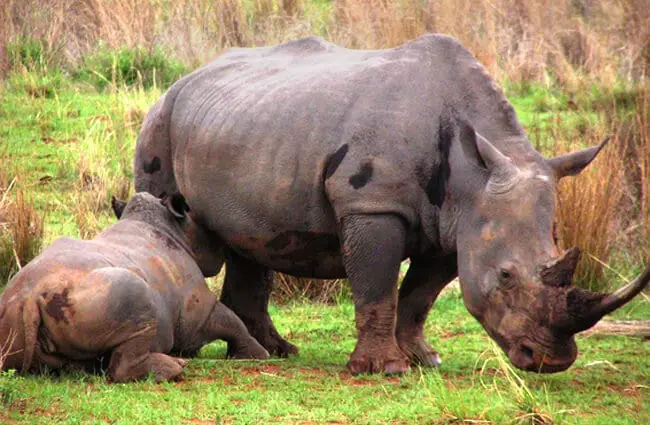
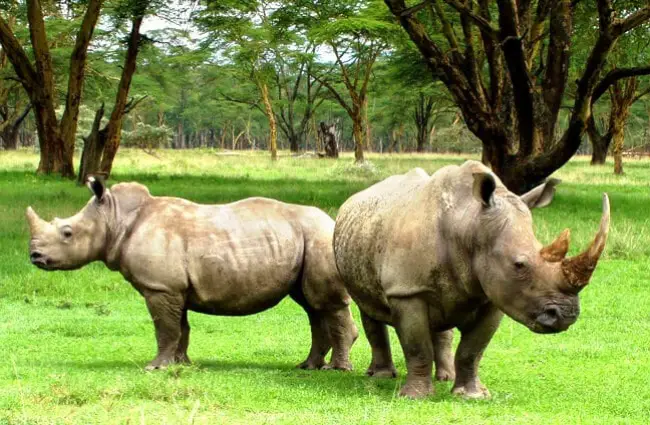


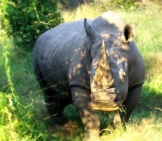

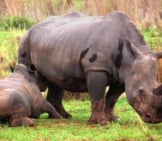

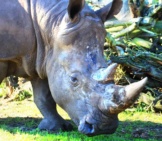
![Red Angus Closeup of a beautiful Red Angus cowPhoto by: U.S. Department of Agriculture [pubic domain]https://creativecommons.org/licenses/by/2.0/](https://animals.net/wp-content/uploads/2020/03/Red-Angus-4-238x178.jpg)












![Red Angus Closeup of a beautiful Red Angus cowPhoto by: U.S. Department of Agriculture [pubic domain]https://creativecommons.org/licenses/by/2.0/](https://animals.net/wp-content/uploads/2020/03/Red-Angus-4-100x75.jpg)

